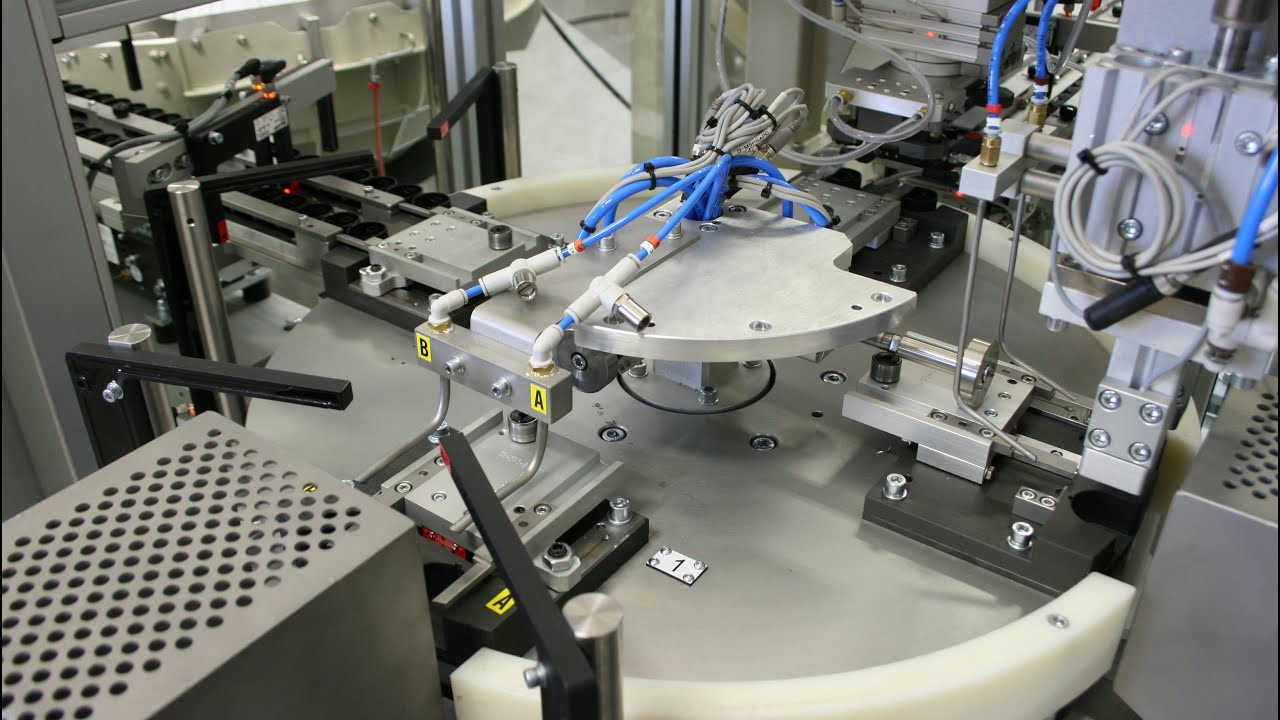In the ever-evolving world of manufacturing, technology plays a crucial role in enhancing efficiency and precision. Automated riveting machines are a prime example of this technological advancement. These machines have revolutionized industrial assembly processes, offering numerous benefits and applications. Let’s dive into the features, benefits, and applications of an Automated Riveting Machine and explore how they can transform your production line.
Understanding Automated Riveting Machines
What is an Automated Riveting Machine?
An automated riveting machine is a sophisticated piece of equipment designed to place and secure rivets automatically in various materials. It replaces manual riveting, ensuring consistent and precise results, and integrates seamlessly into production lines to enhance efficiency.
How Do They Work?
These machines utilize programmable controls and sensors to position and fasten rivets accurately. The process is guided by software that ensures each rivet is placed with exact precision, maintaining the integrity and quality of the product.
Key Features of Automated Riveting Machines
High Precision
Automated riveting machines are engineered to deliver high precision. They ensure that each rivet is placed accurately, which is essential for maintaining the structural integrity of assembled components.
Programmable Settings
These machines come with programmable settings that allow operators to customize the riveting process according to specific production needs. This flexibility makes them suitable for various applications and materials.
Real-Time Monitoring
Many automated riveting machines feature real-time monitoring systems. These systems track each rivet’s placement and pressure application, providing immediate feedback and allowing for quick adjustments to maintain quality.
Advanced Software Integration
Modern automated riveting machines are equipped with advanced software solutions that offer detailed analytics and insights. This software helps manufacturers optimize the riveting process, identify potential issues, and implement continuous improvements.
Benefits of Using Automated Riveting Machines
Increased Efficiency
Faster Production Cycles
Automated riveting machines significantly speed up production cycles. Unlike manual riveting, which is slow and labor-intensive, these machines can place multiple rivets in seconds, drastically reducing production times.
Continuous Operation
Designed for continuous operation, these machines experience minimal downtime. Regular maintenance is straightforward, and necessary repairs can be performed quickly, ensuring your production line remains operational.
Superior Precision and Consistency
Accurate Rivet Placement
Manual riveting can lead to inconsistencies. Automated machines ensure each rivet is placed with pinpoint accuracy, resulting in a uniform and high-quality product.
Uniform Pressure Application
These machines apply consistent pressure to each rivet, ensuring a secure and uniform fit every time. This consistency is crucial for maintaining the structural integrity of assembled components.
Cost Savings
Reduced Labor Costs
Automating the riveting process significantly reduces the need for manual labor. This not only cuts labor costs but also minimizes the risk of workplace injuries associated with repetitive manual riveting tasks.
Lower Material Waste
Automated machines are programmed to use rivets efficiently, reducing material waste. This precision helps lower the overall cost of materials used in production, contributing to better profitability.
Improved Safety Standards
Minimized Human Error
Automation reduces the chances of human error, which can lead to faulty products and potential safety hazards. An automated riveting machine ensures each rivet is correctly placed and secured, enhancing the overall safety of the final product.
Safer Working Environment
Automating the riveting process reduces the risk of injuries associated with manual riveting, such as repetitive strain injuries and accidents involving hand tools. This leads to a safer working environment for your employees.
Applications of Automated Riveting Machines
Automotive Industry
In the automotive industry, automated riveting machines are used extensively for assembling various components. They ensure the precision and durability required for safety-critical parts, significantly improving production efficiency.
Aerospace Industry
The aerospace industry benefits immensely from automated riveting machines. The high precision and quality control are crucial for the structural integrity of aircraft, making automated riveting an indispensable tool for aerospace manufacturers.
Electronics Manufacturing
In electronics manufacturing, automated riveting machines are used to assemble small and delicate components. Their precision ensures that each part is securely fastened without damaging sensitive electronics.
Appliance Assembly
Automated riveting machines are also used in the assembly of household appliances. They help ensure that components are securely fastened, improving the durability and performance of the final product.
Construction Equipment
The construction industry uses automated riveting machines to assemble heavy-duty equipment and machinery. These machines ensure that components are robustly connected, enhancing the safety and longevity of construction equipment.
Future Trends in Automated Riveting Technology
Integration with IoT
The Internet of Things (IoT) is increasingly being integrated with automated riveting machines. This connectivity allows for real-time monitoring and adjustments, enhancing efficiency and reducing downtime.
Artificial Intelligence and Machine Learning
The integration of artificial intelligence (AI) and machine learning into automated riveting machines is on the horizon. These technologies can further enhance precision, adaptability, and efficiency, pushing the boundaries of what is possible in automated assembly processes.
Sustainable Manufacturing
As sustainability becomes increasingly important, automated riveting machines are being designed with energy efficiency and reduced waste in mind. These advancements align with global trends towards greener manufacturing practices.
Implementing Automated Riveting Machines
Assessing Your Needs
Before implementing automated riveting technology, assess your production needs. Consider factors such as production volume, material types, and specific requirements of your assembly process.
Choosing the Right Machine
Select a machine that fits your specific needs. Look for features such as adaptability, ease of integration, and advanced software capabilities to ensure you get the best performance.
Training and Maintenance
Proper training for your staff is crucial for maximizing the benefits of automated riveting machines. Ensure your team understands how to operate and maintain the equipment. Regular maintenance is also essential to keep the machine running efficiently.
Conclusion
Automated riveting machines are transforming the manufacturing industry by offering enhanced efficiency, precision, and cost savings. From the automotive and aerospace industries to electronics and construction, the applications are vast and varied. Investing in an Automated Riveting Machine can revolutionize your production line, ensuring you stay competitive in an ever-evolving market. Ready to enhance your manufacturing capabilities? Explore the potential of automated riveting machines and experience the transformative benefits they bring.


